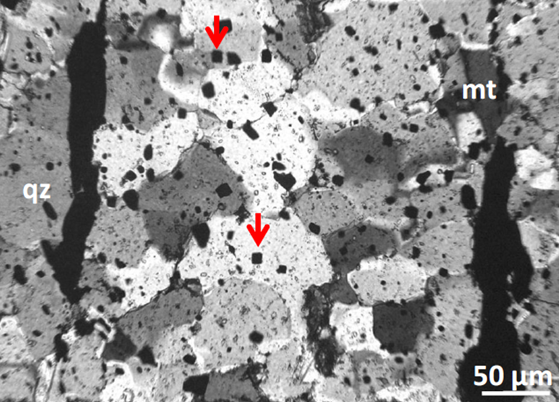Magnetic Fatigue of Magnetite
- Contact:
A. Kontny
F.R. Schilling
B. Reznik
H. Fuchs
- Funding:
Deutsche Forschungsgemeinschaft (DFG)
- Startdate:
2017
- Enddate:
2020
Magnetic properties of rocks are used to qualitatively describe the dynamics of tectonic-related deformation phenomena within the Earth’s crust. Up to now modifications of magnetic properties are mainly described from static or dynamic shock-related deformations (e.g. Reznik et al. 2016 External Link). However, it is generally accepted that tectonic stress accumulates non-uniformly, but remains quite low until a rapid stress variation occurs shortly before and after earthquake propagation or volcano eruption. Rapid stress increase may be especially favorable if an intermediate to high-temperature tectonic loading exhibits a cyclic character.
This study investigates the effect of cyclic loading and heat treatment on magnetic and structural properties of magnetite by comparison of samples of a banded magnetite-quartz ore with samples of a natural magnetite single crystal. The magnetic properties are examined by analysis of magnetic susceptibility from Verwey Transition (~125 K) to room temperature. Microscopic deformation structures are characterized by light microscopy, Raman spectroscopy, X-ray powder diffraction and TEM combined with FIB lamella.
Publication:
Reznik, B., A. Kontny, J. Fritz, and U. Gerhards (2016), Shock-induced deformation phenomena in magnetite and their consequences on magnetic properties, Geochemistry Geophys. Geosystems, 17, 1–20., DOI: 10.1002/2016GC006338.

Fig 1. Transmitted light microscope image of banded magnetite- quartz ore with magnetite (mt) appearing in form of polycrystalline strings and single grains embedded in a quartz (qz) matrix. Arrows mark mt-grains with cubic shapes (Reznik et al. 2016).

